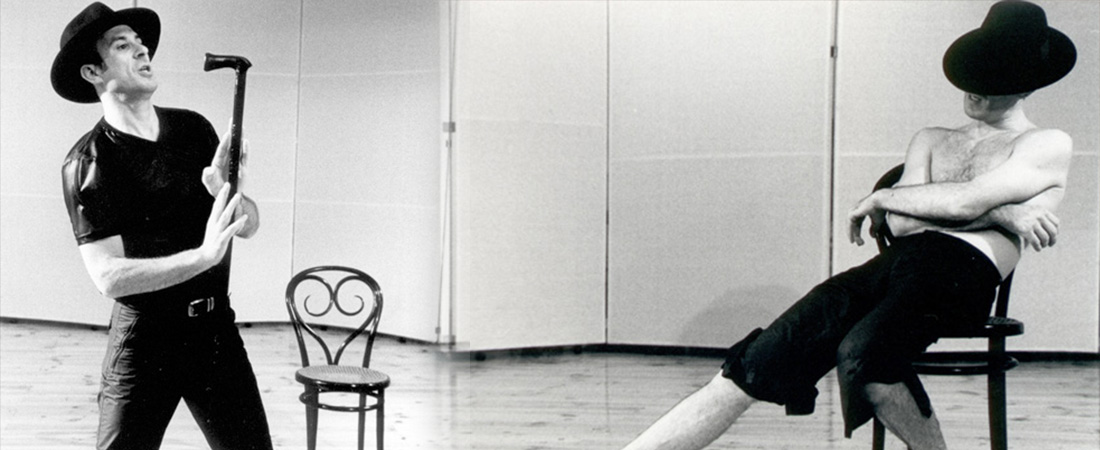The Cain Project evolved in three phases: the construction of personal material in the First Phase led to a process of adaptation and montage into duos and other combinations in the Second Phase, which in turn led to a new performance structure in the Third Phase that discarded all previous physical scores but retained its vocal layer as a creative and dramaturgical agency.
The First Phase (2001-2003). The construction of individual physical scores in the First Phase was bound with a technical investigation of the performer's craft. The first year of the project was dedicated to the transmission of physical training regimens that was also aimed at preparing the ground for performance-building. Various techniques for constructing a sequence of physical actions were investigated in 2002, mainly as they emerged from (1) physical exercises, (2) the work with objects and clothes, (3) working with partners, (4) spatial dynamics, and (5) working with music. The two First Phase presentations were never intended as finished pieces.
The Second Phase (2003-2004). In this phase, the individual sequences of actions of Amargo and ICARUS 4 were developed in two main ways: (1) already extant material was made to adapt to the new structural context of encountering a colleague's work, and (2) new material was developed for the same reason. In the case of the latter, the role of a director who leads the montage procedure emerged from the practical necessity of having a guiding light. Concurrently, and related with the need for a guiding directorial presence, was the gradual emergence of a shared dramaturgy.
- TWO (2004)
- TWO.2 (2004)
- Amargo TWO (2004)
The Third Phase (2004-2005). The technical procedures of the First Phase and the strategies of encounter in the Second, paved the way for a more mature engagement with the performer's physical work in the Third Phase. The first step in the Third Phase involved the shedding of old material. It was not a question of ‘starting from scratch' but of ‘moving to the next stage'. The actual process that led to a new layer of physical actions was dependent on the shifting spatial configurations of four benches. The one essential element that did not change and which continued to evolve till the end was the tempo-rhythm of what eventually became Lamentations of Cain.
- Lamentations of Cain (2005)
The Cain Project, especially the culminating Third Phase, is documented extensively in
Lamentations of Cain: Dramaturgy of a Performance Process (2006).
